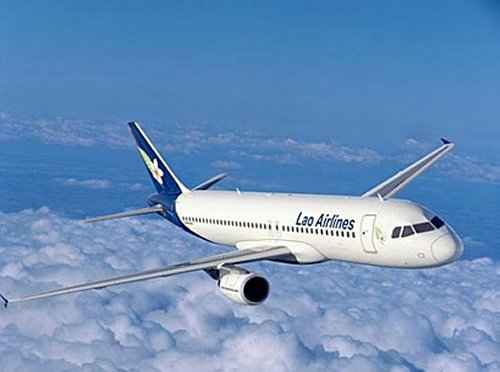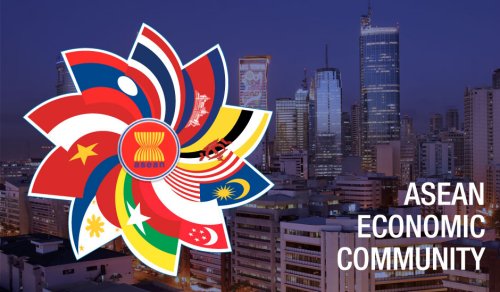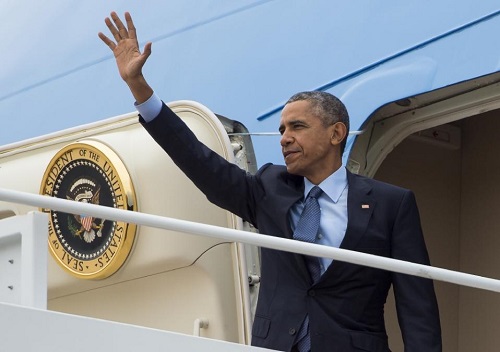Asean Open Skies On Track
Three aviation tragedies involving carriers from Asean within a space of nine months will not stop the implementation of the Asean open skies policy that will kick off from January 1.
The policy, however, is expected to pay more attention to having higher standards of safety and other regulatory approvals to operate flights, among others, when it is fully implemented by the end of 2015.
Although the road to full open skies is not completely clear of obstacles, some Asean airlines particularly low-cost carriers (LCCs) are already positioning themselves for the Asean open skies.
Analysts said the higher safety standards were not entirely due to the two catastrophes involving aircraft from Malaysia and Indonesia. Asean members, they said, had always worked towards their respective safety security compliance for the industry.
“It is not something they hastily prepared in the wake of the airline tragedies. Safety has always been paramount in the aviation industry. No airlines will compromise on safety issue. It (safety) will always be their top priority,” an aviation analyst said.
Industry players said the Asean open skies not only provide member countries with air service liberalisation, but also include aviation safety, aviation security, air traffic management, civil aviation technology, aviation environment protection and air transport regulatory framework.
This year has been the worst for the aviation sector in the region, where for the past few years airlines were hit by high operating costs largely due to fuel prices. But since June this year, the fuel cost has come down but a spate of airline tragedies has cast a shadow over the airline companies.
On March 8, Malaysia Airlines (MAS) MH370 went missing after leaving Kuala Lumpur en route to Beijing, while in July, another MAS jet was shot down when flying over a rebel-controlled area in Ukraine.
The latest air tragedy happened on Sunday when AirAsia Indonesia flight QZ8501 went missing after leaving Surabaya for Singapore.
Analysts and industry officials said airlines had always not compromised on safety issues and that the MH370 tragedy was a rarity.
International Air Transport Association (IATA) CEO Tony Tyler had said right from the beginning there was an understanding among governments and industry players that “safety was not a competitive issue”. He said there has always been great cooperation among all the industry’s stakeholders in efforts to make flying ever safer.
Tyler said IATA was working with its partners towards some recommendations on how to better track aircraft. There is some promising technology that will become available in the near future.
Meanwhile, industry players and analysts are excited with the impending policy which is expected to take place in 2015 as it will be a boon to the Asean carriers.
Analysts said the open skies policy would likely see greater growth and development as airlines in the region were spurred to greater competition.
“With the Asean open skies policy being implemented next year, there would be higher air travel demand in the region, as well as an increase in passenger traffic and movement of goods. This will add a new dimension of growth for the country,” a bank-backed analyst said, adding that Malaysia was one of the major beneficiaries of the policy.
The Asean open skies policy, to be introduced next year as part of the Asean Economic Community, is expected to transform the aviation industry by allowing for more liberalisation between the regional aviation markets, thus encouraging greater connectivity, higher traffic growth and service quality, while lowering ticket prices.
In essence, all of the 10 Asean member countries will open up their international airports to each other, with no regulatory limit in terms of frequency or capacity.
AirAsia group CEO Tony Fernandes told StarBiz in an interview last week (before the QZ8501 incident) that the group was very excited on Asean as a whole and it had been very progressive in opening up its skies. He believed the policy would further boost Asean tourism market.
“We believe in economic union of Asean. AirAsia has been moving Asean people around successfully. The open skies policy will enable secondary cities to reopen, improved connectivity for SME and tourism,” he told StarBiz.
He said the policy would be the first step in terms of Asean common ownership. He also hoped that it would be truly open skies.
“We need open skies — true open skies — and common ownership. As an Asean company, why can’t I own 100 per cent of another airline in Asean? And why can’t another airline own 100 per cent of a Malaysian carrier?” Tony said.
AirAsia has managed to build an Asean tourism market way before the implementation of the policy. The carrier has moved ahead to secure the Indonesian market, accounting for a significant portion of the region’s total population.
Maybank Investment Bank analyst Mohshin Aziz said there was much to cheer upon the launch of the Asean open skies in 2015.
He said upon closer scrutiny, many of the advertised benefits were just a mirage. For example, open skies exist for capital cities, but there is a cap on slots so it amounts to no net benefit.
“Furthermore, the granting of fifth-freedom rights remains arbitrary and dependent on the host country. We wish the tentacles of bureaucracy could be crimped and that things move in a more cohesive manner, much like in the European Union (EU).
A fifth freedom enables an airline to fly to two countries with a flight that originates or ends in its home country. For instance an aircraft can take off from Kuala Lumpur, pick passengers in Bangkok before stopping in Hanoi.
“However, to be fair, the EU open skies took 52 years to complete, whereas Asean open skies was mooted 18 years ago. Hopefully, there will be more deregulations and the region will be more single market-centric in the near future,” he said.
Some players argued that true liberalisation would ensure seventh freedom rights whereby airliners get the right to transport passengers between two foreign countries without offering flights to one’s home country. For instance an airline from Kuala Lumpur can operate between Jakarta and Singapore without having to return to the home base.
It has been reported that the Asean open skies has been ratified by all Asean countries except for the Philippines. Indonesia had ratified the 2009 Multilateral Agreement on Air Services (MAAS) that would give Asean airlines unlimited third, fourth and fifth freedom rights to operate between capital cities.
So, who will benefits and who will rule Asean skies?
In a report, UOB Kay Hian said AirAsia and airport operators such as Malaysia Airports Holdings Bhd (MAHB) would benefit from Indonesia’s ratification of the 2009 Asean open skies.
The research house noted that intra-Asean LCC penetration which was already at 59 per cent would rise further if MAAS was fully ratified.
“The two dominant LCCs in Asean – Lion Air and AirAsia – will be the main beneficiaries. AirAsia will benefit via higher intra-Asean travel, utilisation of its extensive order book, and higher lease income.
“Thai AirAsia, which is Thailand’s largest LCC, will also benefit from greater intra-Asean travel and can serve as an LCC hub to China,” the research house said.
It said airport operators MAHB and Airports of Thailand would also be beneficiaries in the long term.
“Bangkok’s Suvarnabhumi airport is operating at 90 per cent capacity and a new terminal will only be completed in 2017. However, LCC airport Don Maung will see greater pax throughput.
“The primary beneficiary, however, will be KLIA2 as nine LCCs are serving KLIA2, five of which are from the AirAsia group. MAHB will be able to benefit from higher aeronautical and non-aeronautical revenue,” it said.
Source: The Nation




